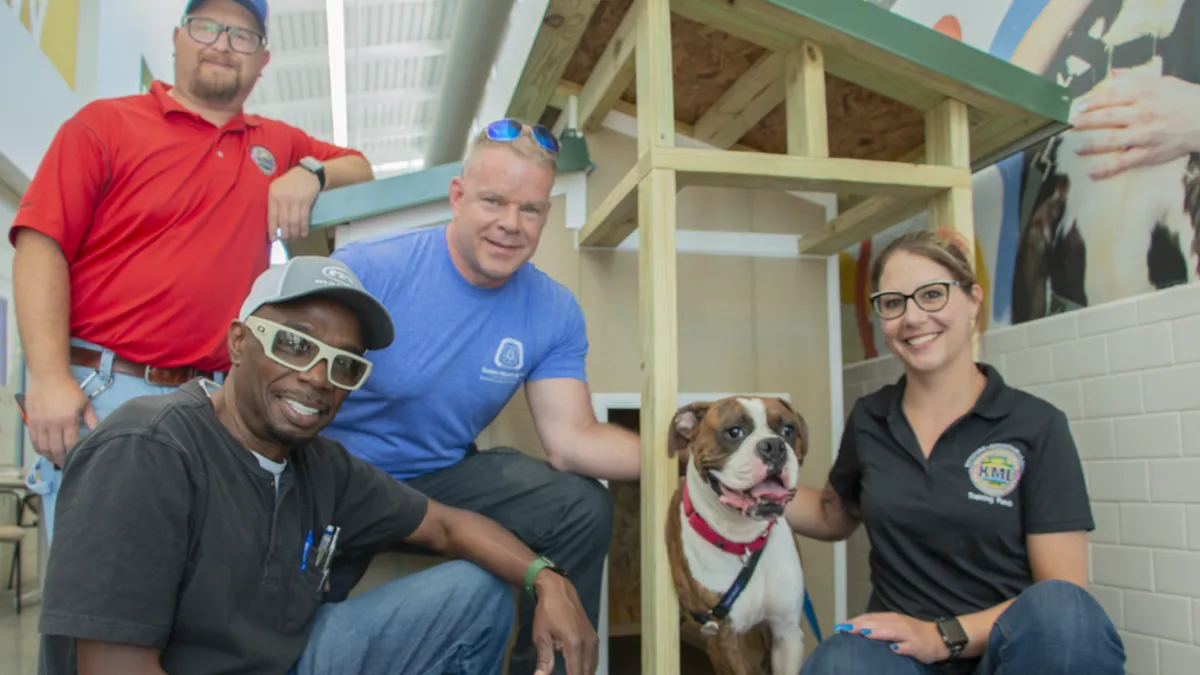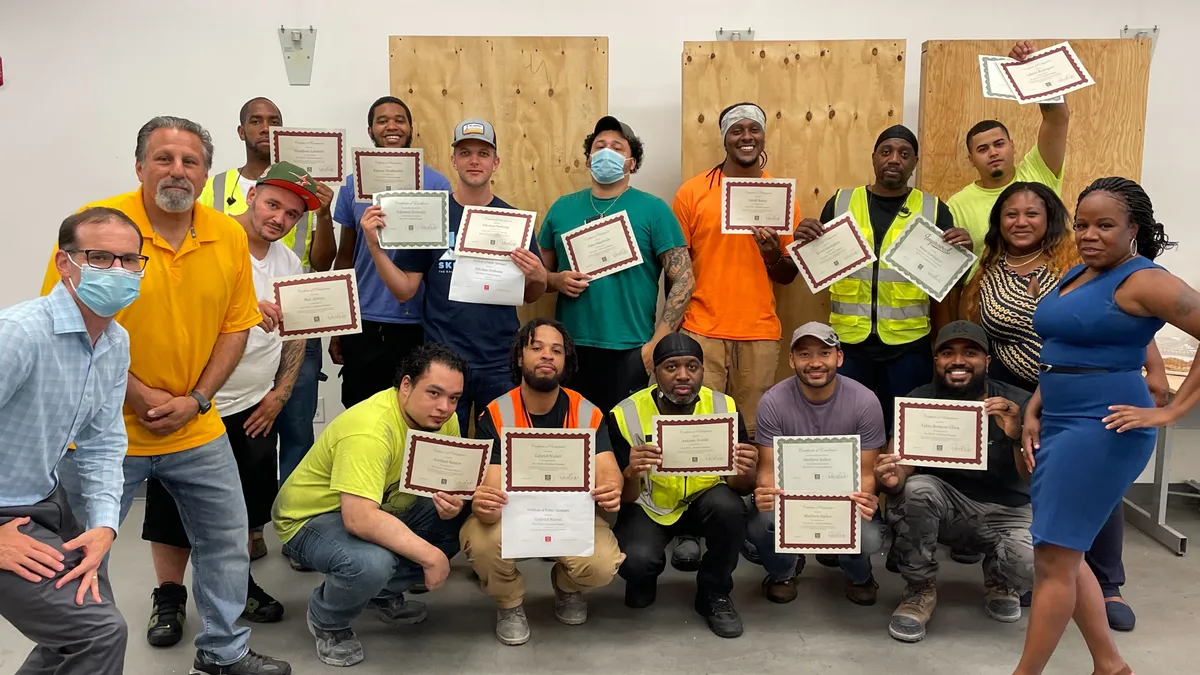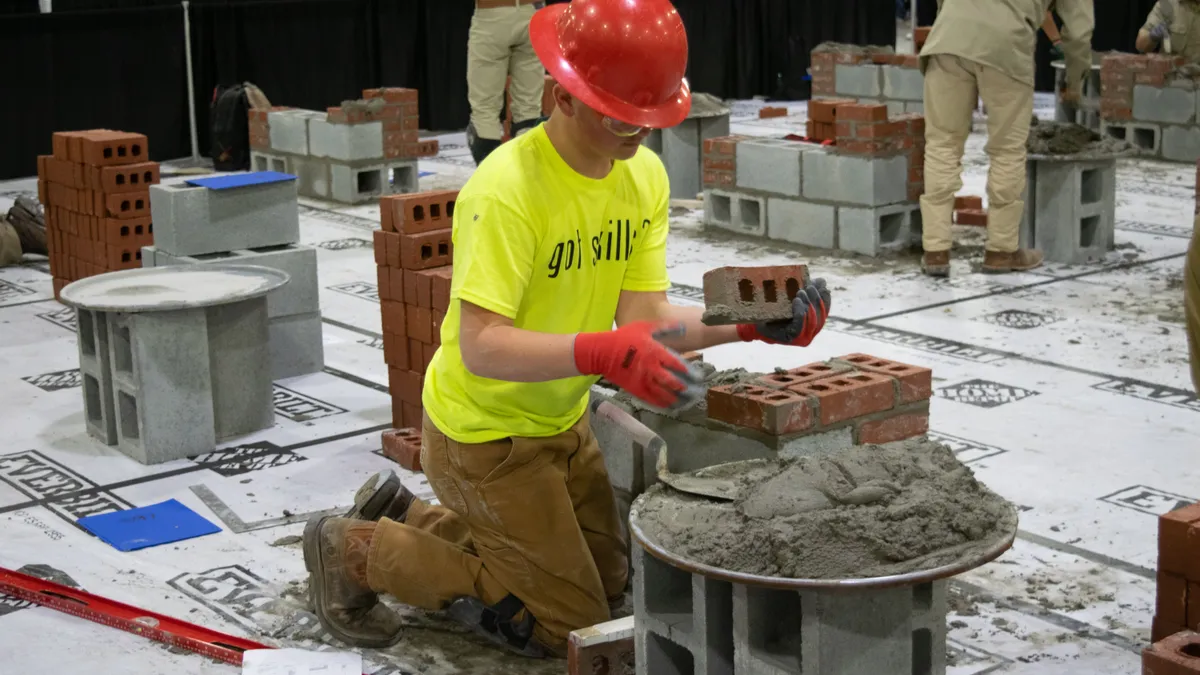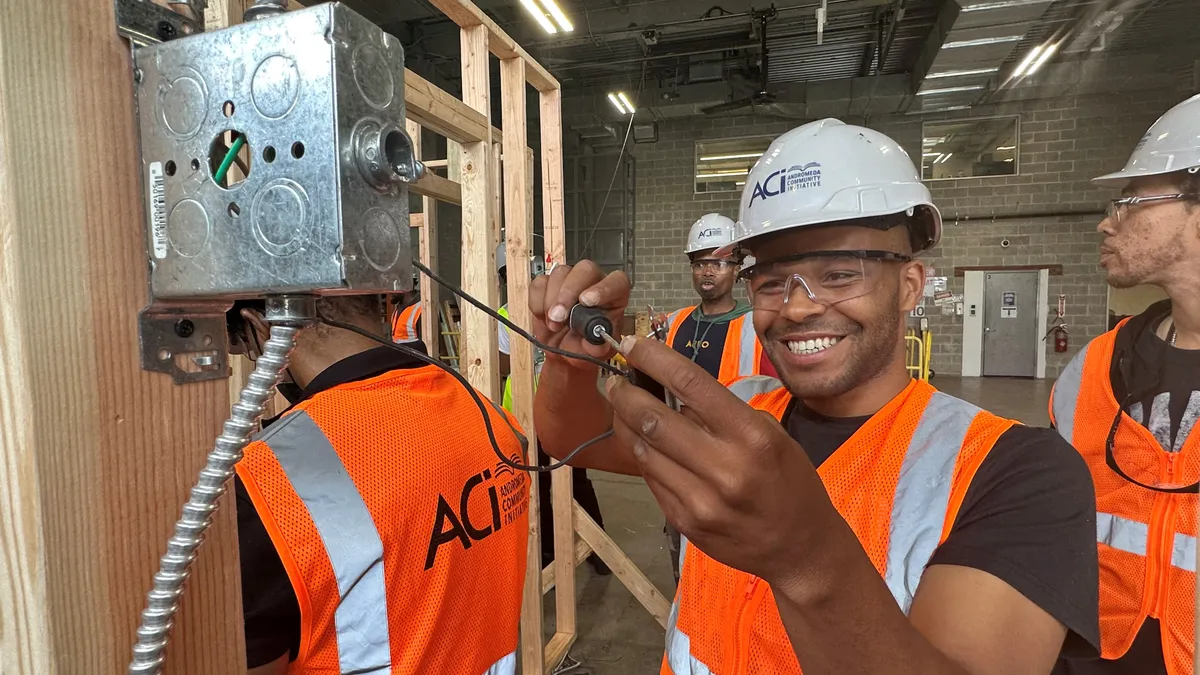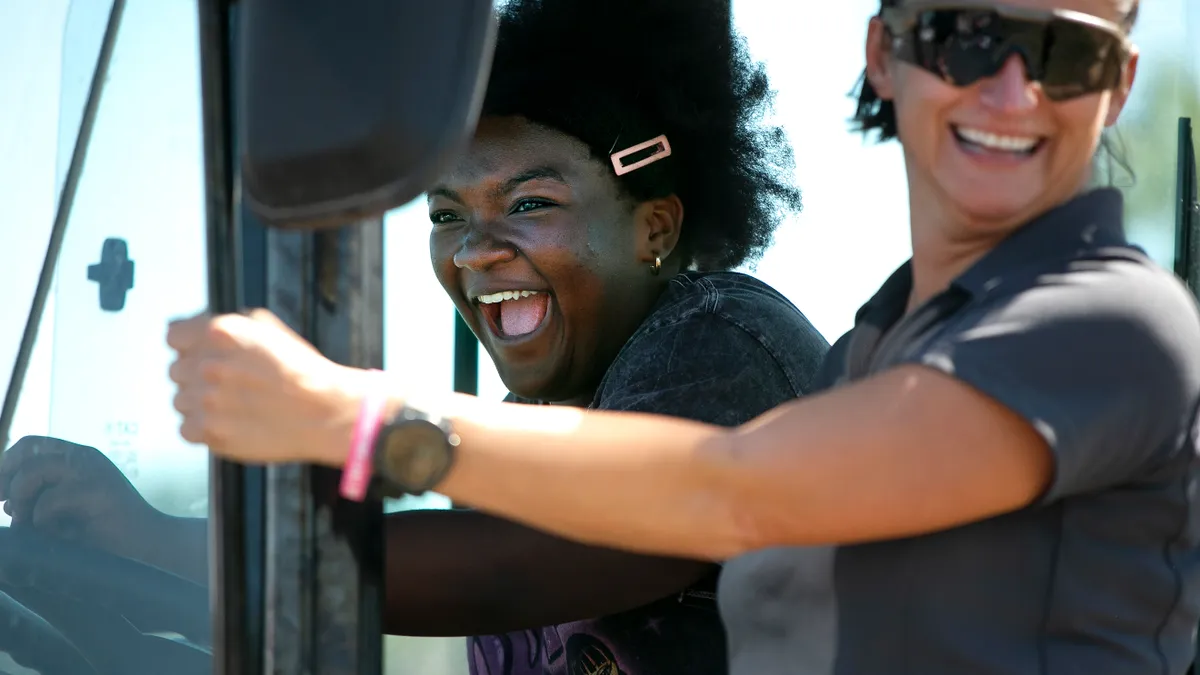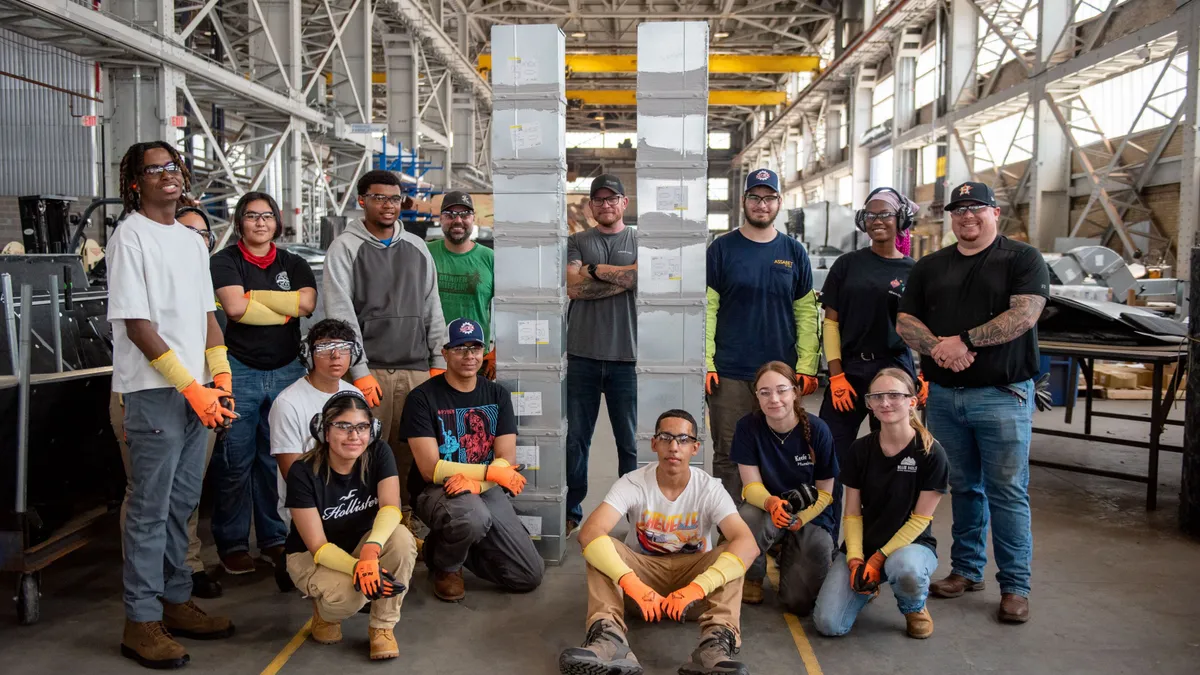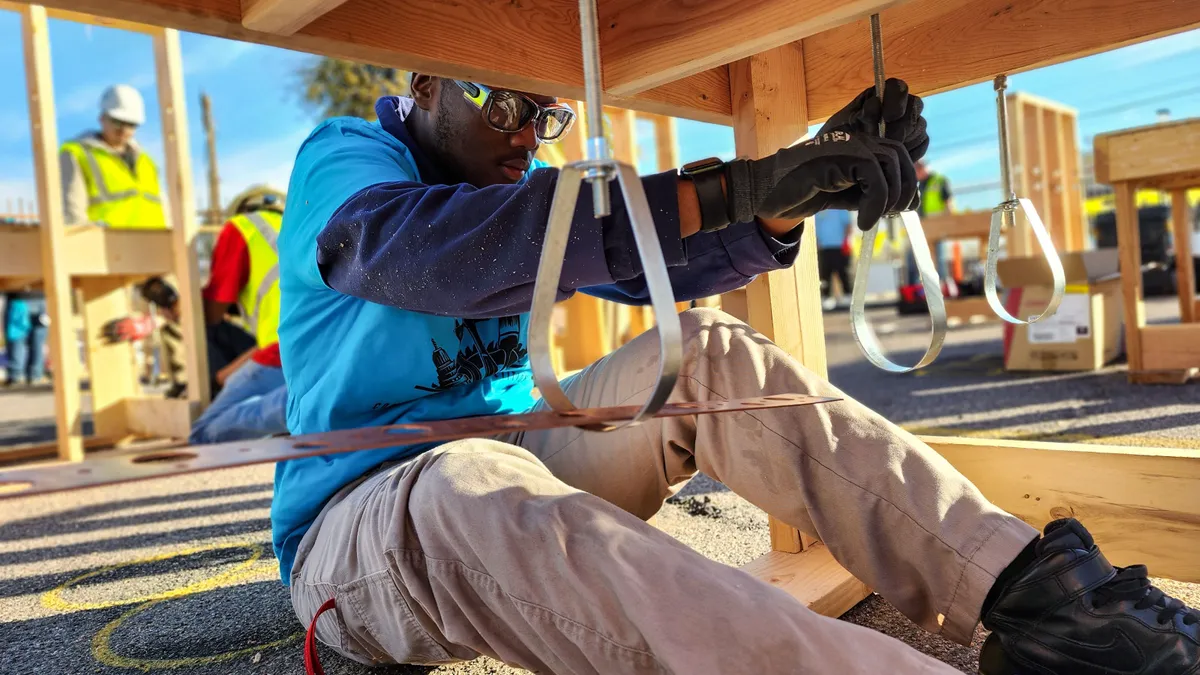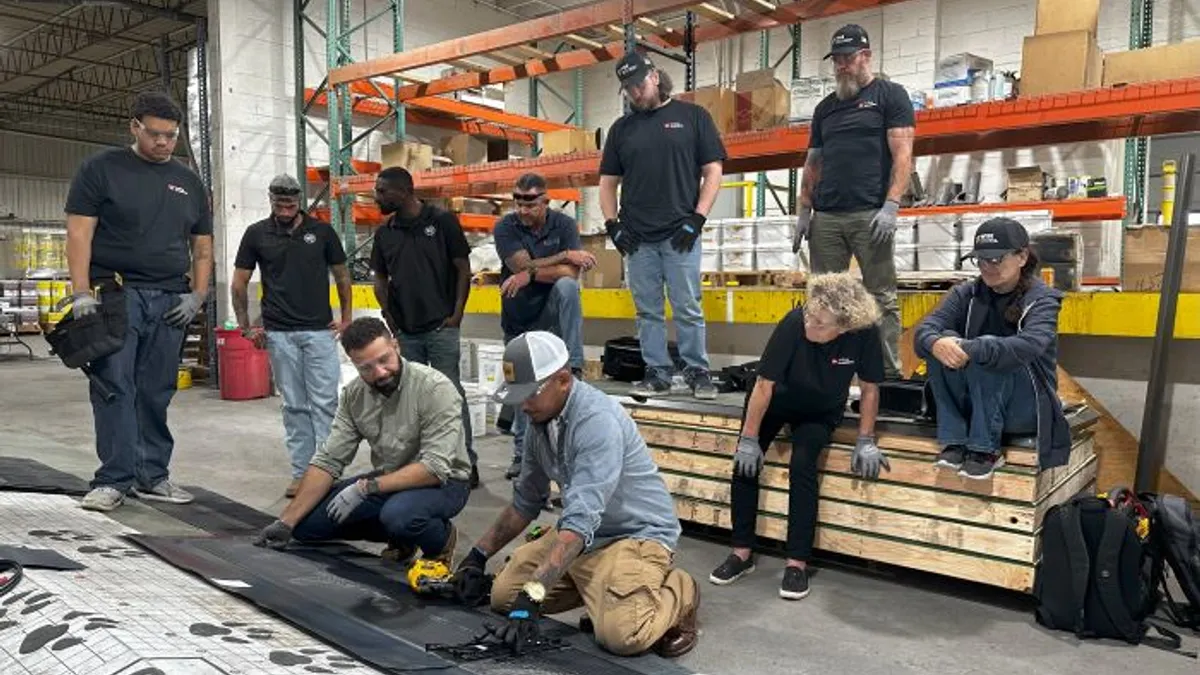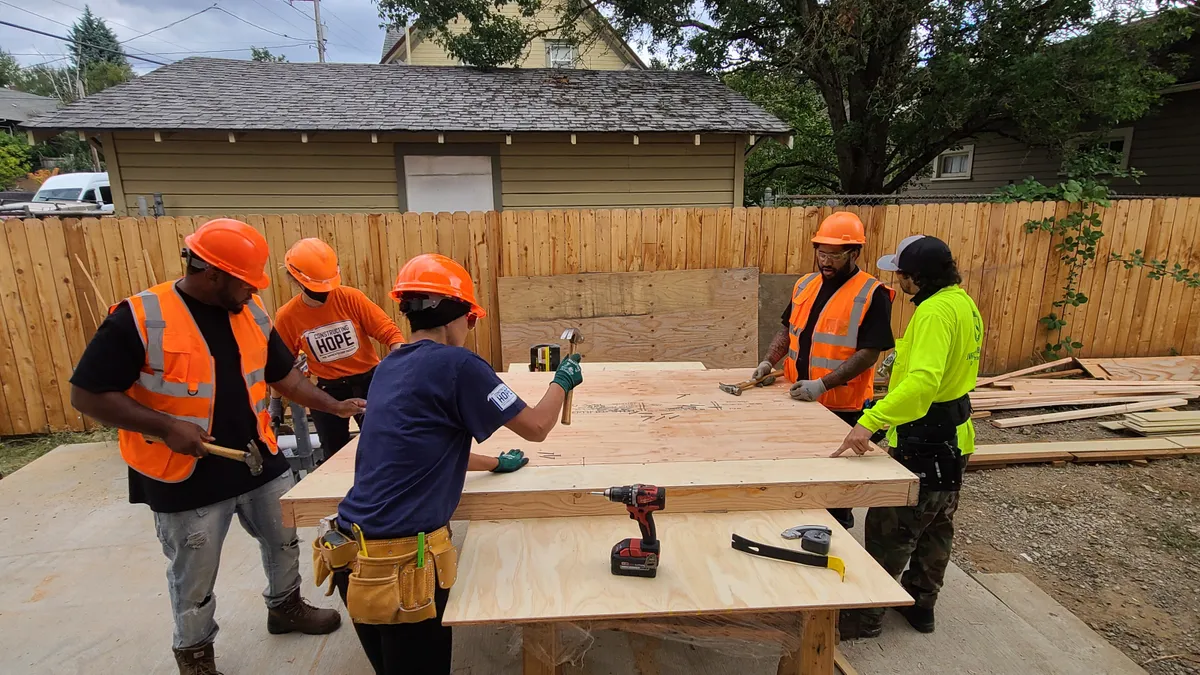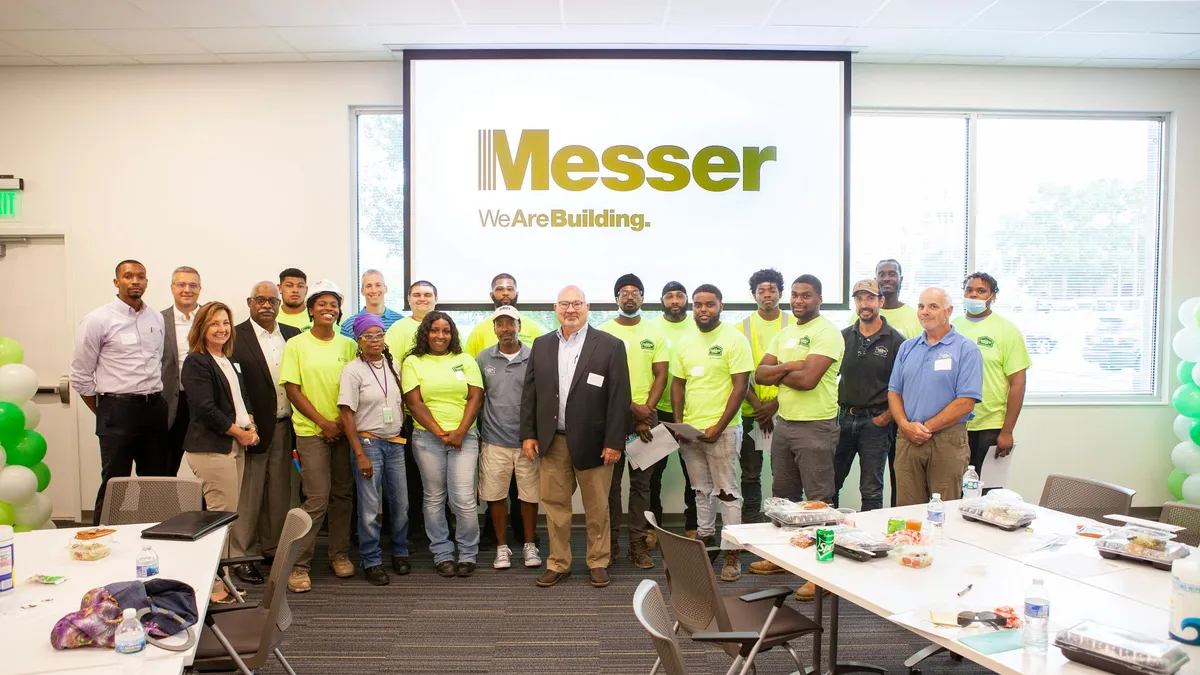The construction industry faces a stark shortage of workers, but programs and people across the country are working at the local level to solve the problem. Help Wanted highlights grassroots efforts to recruit the next generation of construction pros.
Do you know of a group that is helping attract workers to the construction industry? Let us know.
In 2014, while riding It’s a Small World at Walt Disney World, Priscilla Torres, then 24, had a revelation.
“I was like, ‘Someday I want to be a Disney carpenter.’ Like, that’d be awesome,” she told Construction Dive.
That’s become Torres’ ultimate, long-term goal: to translate the skills she's learned in commercial construction since that trip to Magic Kingdom into a scenic carpentry career, building creative sets or backdrops.
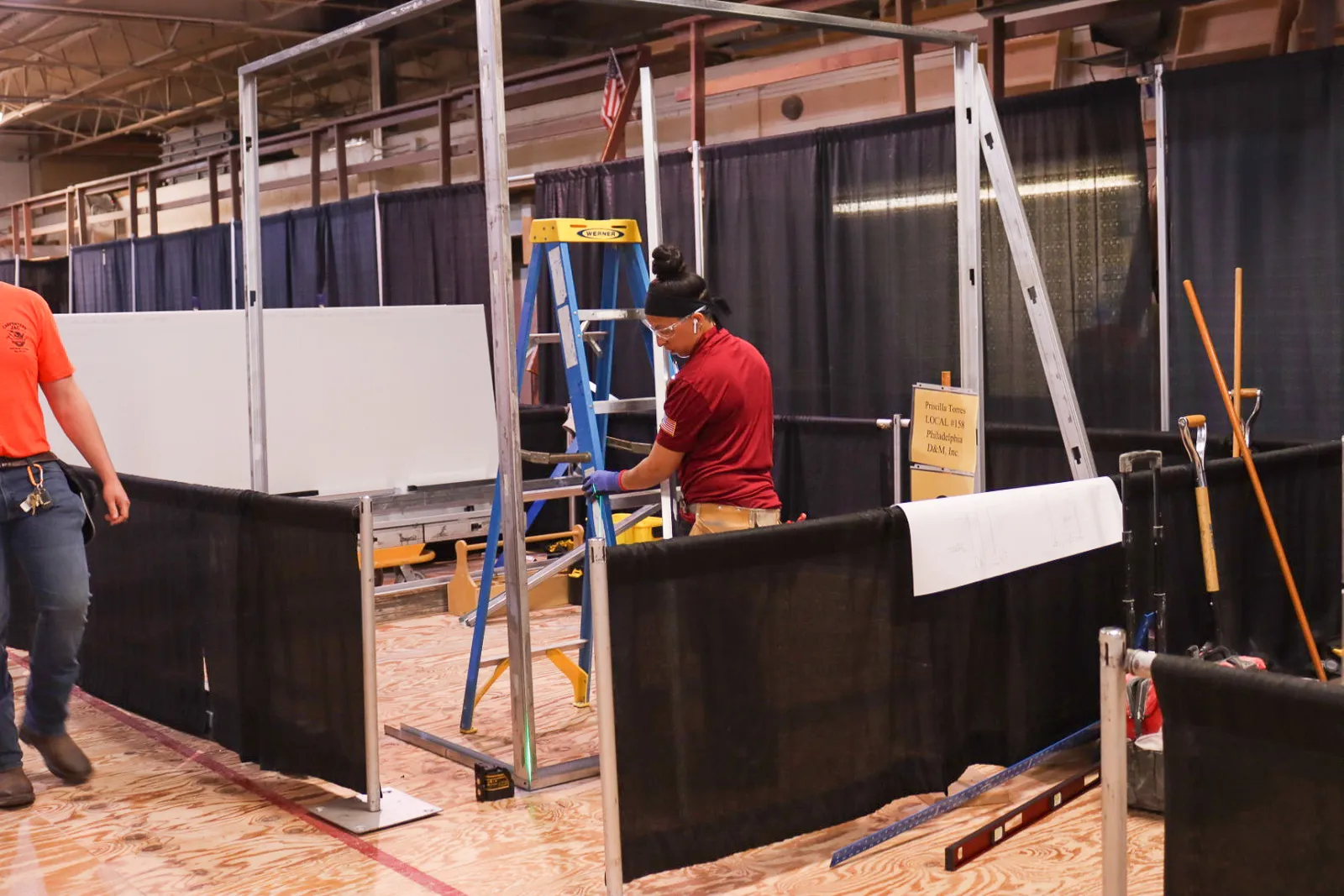
George McDonnell served in the U.S. Army for 22 years, where he liked to work with his hands. A friend of his turned him on to a job in the trades, where he has a more traditional view of his career path.
“I think I see myself as working with the foreman and so forth up the ladder,” McDonnell told Construction Dive.
Both recently finished their four-year Registered Apprenticeship Program with the Eastern Atlantic States Regional Council of Carpenters. In May they competed in a public skills expo and open house, Torres in Philadelphia and McDonnell in Pittsburgh.
A showcase or a competition?
“I'll be honest, we like the word ‘competition,’” said Bob Landy, training director of the Philadelphia chapter. “One of the things that we try to teach our students to do is to compete. They need to compete, they need to compete with themselves. They need to compete against each other.”
This year marked the 55th annual showcase in Philadelphia, and getting in was no cakewalk. The top six general carpenters, interior carpenters (Torres' specialty), floor layers, mill cabinet makers and millwrights competed this year.
They had to pass a comprehensive math test to earn a spot. But even a passing grade didn’t ensure entry — they needed one of the highest scores, said Landy, a 34-year carpenter whose father and uncles also worked in the trades.
In Philadelphia, the general carpenters went up against one another to build the best wishing well.
In Pittsburgh? EASRCC presented the competing general carpenters with a design from the winner of an architectural contest: a doghouse.
The union then shared the doghouses with local humane societies, according to Rich Paganie, training director in Pittsburgh.
One of the doghouses went to Humane Animal Rescue of Pittsburgh, where a local youth program painted it to display as an art piece at one of its shelters.
While Torres and McDonnell didn't take home the cash prize ($500 for each category in Pittsburgh and prizes and cash ranging from $100-$350 in Philadelphia), they pushed themselves during the competition.
McDonnell said the many aspects of the doghouse made it a tough build in the time period.
“What dog doesn’t need a front porch?” McDonnell said.
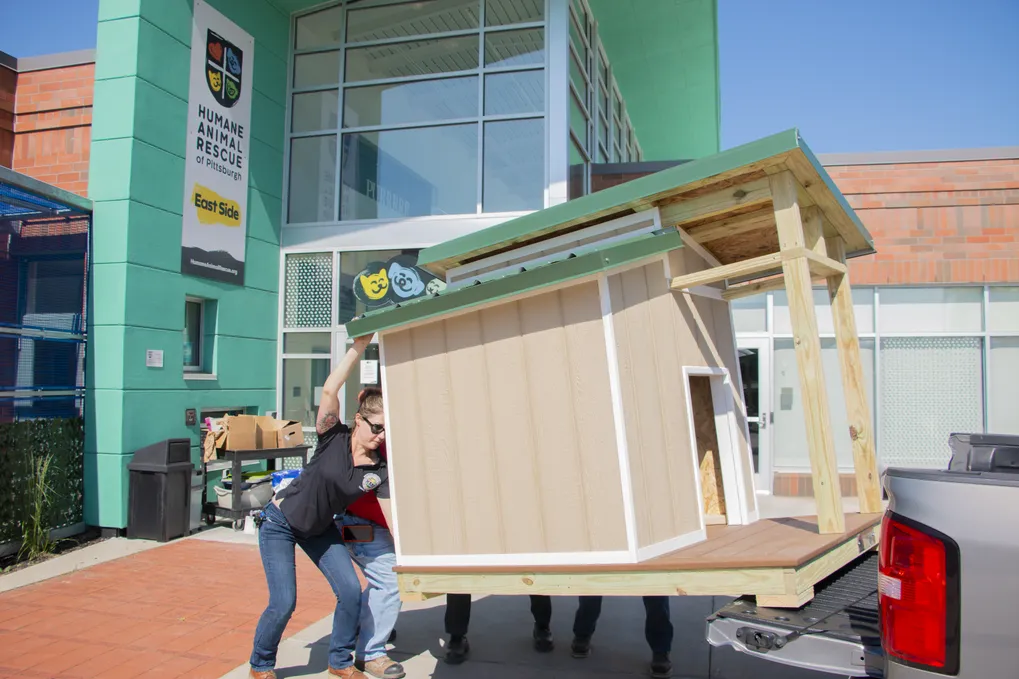
Torres said she felt “proud” to be the only woman competing that year, and wanted to show people that anyone could give carpentry a try.
“I think I did really well, I did not win, but supposedly I lost by two points to the guy who did,” she said.
Paganie, the instructor, competed in the first Pittsburgh competition over 20 years ago, and says he’s still upset he didn’t win.
“It's 20 years later and still it's like, I want another shot at it,” he said.
Recruiting with an audience
The showcase and expo, by definition, didn’t serve just as a competition. The audience for the showcase largely includes family members of competitors, but Landy said in years past, as many as 20,000 viewers and potential future students have passed through to view the expo.
In addition, the union has gone to classrooms to show students how the trades provide a viable career path, especially for those who don’t fit into the university mold. More recently, EASRCC has tried to get in front of not just high school seniors, but freshman, sophomores and middle schoolers as well.
“I love when parents come because they're the ones in the background, kind of, you know, listening harder and knowing the value of it more than the children do,” Landy said.
Torres, who briefly attended college, thinks the trades as an option should be showcased more in high school.
“I do wish that I would have maybe known about the opportunity,” she said. “I basically had no idea it existed until four years ago.”



